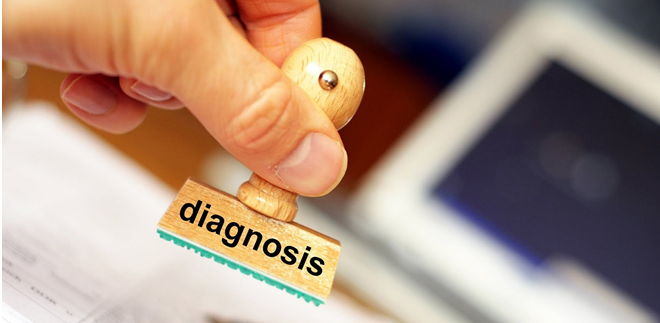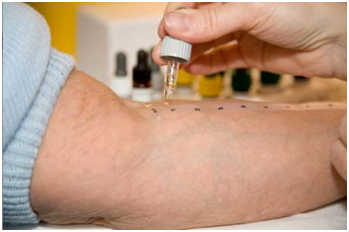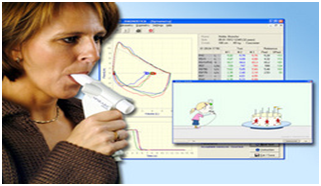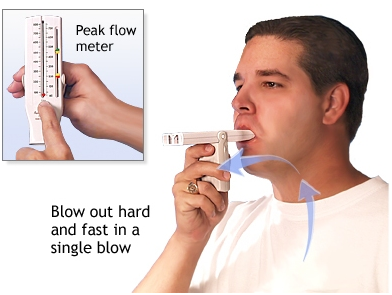Services



Most advanced diagnostic tests, using the latest cutting edge technology is used in the clinic for accurate diagnosis of Allergy & Asthma related diseases, by the trained Doctors & technicians. It is paramount to have a correct diagnosis done, as identifying the root cause & eliminating the same, can itself give major relief in symptoms & can even cure the disease.
ALLERGY SKIN TESTING
Skin Tests are used to confirm clinical sensitivity induced by aeroallergens, foods, some drugs, a few chemicals, and hymenoptera venom. Indicated in following diseases:
Allergic Rhinitis
Asthma
Food Allergy
Atopic dermatitis
Hymenoptera hypersensitivity



Method
Skin prick testing is done demonstrates an allergic response to a specific allergen. SPT can help to confirm the presence of an allergy to pollen, food, dust, mites, moulds and animal dander’s. SPT is a simple, safe and quick test, providing results within 15-20 minutes. This will enable you to receive a diagnosis and management plan at your appointment.
The skin prick test introduces a tiny amount of allergen into the skin, eliciting a small, localized allergic response, in the form of a wheal (bump) and flare (redness) at the site of testing. These tests can be carried out on all age groups, including babies. The test allergens are selected following a discussion with your clinician and based on your history.
Prerequisites
The patient needs to avoid taking anti-histamines and certain other medications before the test. Long acting antihistamines (those that do not cause drowsiness) should be stopped for five days; short acting antihistamines can be stopped 76 hours beforehand.
Potential Risks of Non-Specialist Care
Misinterpretation of test results
Over diagnosis
Mismanagement
Over prescription of meds. and treatments
Costly and unnecessary allergen avoidance
ALLERGY BLOOD TESTS
Blood tests measure the amount of IgE antibody circulating in the blood. The test is carried out on a small sample of blood, usually taken from a vein in the arm in the usual way. The sample is then sent to a laboratory and the results are available in 7 to 14 days
In general, these tests are not specific to a particular food and are therefore not easy to interpret; both false positive and false negative results are possible, and the presence of IgE in a test does not necessarily mean that the substance is actually causing the patient’s symptoms. For these reasons, these tests are not recommended.
Interpreting the results requires care and experience and should always be done by a trained clinician in conjunction with the clinical history.



PULMONARY FUNCTION TESTING / SPIROMETRY
The tests determine how much air your lungs can hold, how quickly you can move air in and out of your lungs
The tests can diagnose lung diseases, measure the severity of lung problems, and check to see how well treatment for a lung disease is working.
Lung function tests are done to:
Determine the cause of breathing problems.
Diagnose certain lung diseases, such as asthma or chronic obstructive. pulmonary disease (COPD).
Evaluate a person’s lung function before surgery.
Check the lung function of a person who is regularly exposed to substances. such as asbestos that can damage the lungs.
Check the effectiveness of treatment for asthma and other lung diseases.
The testing may take from 5 to 30 minutes, depending upon how many tests are done.
How the Test is performed?
Spirometry measures airflow. By measuring how much air you exhale, and how quickly, spirometry can evaluate a broad range of lung diseases. In a spirometry test, while you are sitting, you breathe into a mouthpiece that is connected to an instrument called a spirometer. The spirometer records the amount and the rate of air that you breathe in and out over a period of time.
How to Prepare for the Test?
Do not eat a heavy meal before the test Do not smoke for 4 – 6 hours before the test you need to stop using bronchodilators or inhaler medications You may have to breathe in medication before or during the test. How the Test Will Feel?
Since the test involves some forced breathing and rapid breathing, you may have some temporary shortness of breath or lightheadedness. You breathe through a tight-fitting mouthpiece, and you’ll have nose clips.
Pulmonary function tests are done to:
Diagnose certain types of lung disease (such as asthma, bronchitis, and emphysema)
Find the cause of shortness of breath
Measure whether exposure to chemicals at work affects lung function
Check lung function before someone has surgery
It also can be done to:
Assess the effect of medication
Measure progress in disease treatment
Normal Results
Normal values are based upon your age, height, ethnicity, and sex. Normal results are expressed as a percentage. A value is usually considered abnormal if it is less than 80% of your predicted value.
Normal value ranges may vary slightly among different laboratories. Talk to your doctor about the meaning of your specific test results.
Different measurements that may be found on your report after spirometry include:
1

Expiratory reserve volume (ERV)
2

Forced vital capacity (FVC)
3

Forced expiratory volume (FEV)
4

Residual volume (RV)
5

Slow vital capacity (SVC)

6

Forced expiratory flow 25% to 75%
7

Functional residual capacity (FRC)
8

Maximum voluntary ventilation (MVV)
9

Peak expiratory flow (PEF).
10

Total lung capacity (TLC)

What Abnormal Results Mean?
Abnormal results usually mean that you may have some chest or lung disease.
Some lung diseases (such as emphysema, asthma, chronic bronchitis, and infections) can make the lungs contain too much air and take longer to empty. These lung diseases are called obstructive lung disorders.
Other lung diseases make the lungs scarred and smaller so that they contain too little air and are poor at transferring oxygen into the blood. Examples of these types of illnesses include:
1

Extreme overweight
2

Lung cancer

3

Fibrosis of the lungs
4

Sarcoidosis and scleroderma

Risks
The risk is minimal for most people. There is a small risk of collapsed lung in people with a certain type of lung disease. The test should not be given to a person who has experienced a recent heart attack, or who has certain other types of heart disease.
Considerations
Your cooperation while performing the test is crucial in order to get accurate results. A poor seal around the mouthpiece of the spirometer can give poor results that can’t be interpreted. Do not smoke before the test.
Absolute contraindication
Cardiac surgery/Myocardial Infarction in the past 1 month
Recent thoracic/abdominal/eye surgery in the past 1 month
History of pulmonary embolism
History of aneurysms abdominal/thoracic/ cerebral
Presence of facial palsy/contractures
Patient unwilling to perform the test.
Activities that should be avoided before Pulmonary function testing
Smoking tobacco in any form in the last 2-4 hrs
Consuming tea/coffee/caffeinated drinks in the past 6 hr
Heavy meal in past 4 to 5 hour
Heavy exercise in the past ½ hour
Bronchodilators: inhaled/oral
Alcohol
Lower respiratory tract infection in the past 15 days
Medication Wash out Restrictions:
Short acting Beta2 Agonists (Eg. Salbutamol, Levosalbutamol)
Long Acting Beta2 Agonists (Eg. Formoterol, Salmeterol)
Long acting Antimuscarinic bronchodilators Tiotropium
Long acting Theophyllines
Short Acting Antimuscarinic bronchodilators .e.g. Ipratropium
Inhaled steroids
6 hrs12 hrs24 hrs24-48 hrs8 hrs
1 hr
If above mentioned restrictions are not observed, then the spirometry readings may not be accurate and show false high levels. Moreover, bronchodilator reversibility will be unreliable.



PATCH TESTING
A patch test is used to find allergic causes of eczema/dermatitis and some other types of skin reactions such as reactions to drugs.
You may advise a patch test
If you suspect an allergy as a cause of your eczema such as to cosmetic ingredients or hair dye
If you have eczema that is proving difficult to treat to ensure you are not allergic to ingredients of the treatment for your eczema
If you have a work related eczema/dermatitis
AUTOLOGOUS SERUM SKIN TEST
Asst test is performed by your doctor in the clinic; patient’s venous blood was placed in sterile plastic tubes and allowed to clot at room temperature for 30 minutes. Then the serum was separated by centrifugation at 500 x g for 15 minutes and kept in aliquots for use in the ASST. Sample (50 µl) of autologous serum and 0.9% sterile saline (for negative control) were separately injected intradermally into the volar aspect of the patient’s forearm skin with 27G needle, leaving gaps of at least three centimetres. A skin prick test with histamine (10 µg/µl) was used as a positive control. Areas known to have been involved in spontaneous wheals in the last 24 hours were avoided. Skin prick tests with histamine were interpreted after 15 minutes. Wheals and flare responses were measured after 30 minutes. A positive ASST was defined as a serum-induced wheal which was both red and had a diameter of 1.5 mm or more than the saline-induced response at 30 minutes.




PEAK FLOW MONITORING
A peak flow meter is a device that measures how well air moves out of the lungs. A peak flow meter is used to manage exacerbations. A peak flow meter is used for daily long-term monitoring. A peak flow meter guides therapeutic decisions in the home, school, clinician’s office, or ED.
Use of Peak flow meter
Peak flow meter is used to monitor your asthma control, as BP instrument is used to monitor hypertension and Glucometer is used to monitor diabetes control.
The peak flows are put into zones that are set up like a traffic light. Each zone determines what medications to use and what to do when the peak flow number changes.
Green zone
Green zone Doing well no cough, wheeze, chest tightness or shortness of breath during the day or night. Can do usual activity
Yellow zone
Yellow zone Asthma is getting worse Cough, wheeze, chest tightness or shortness of breath during the day or night. Waking at night due to asthma Can do some, but not all, usual activities
Red zone
Medical alert Shortness of breath Medicines not working Cannot do usual activity It is an emergency. Call your Doctor.

